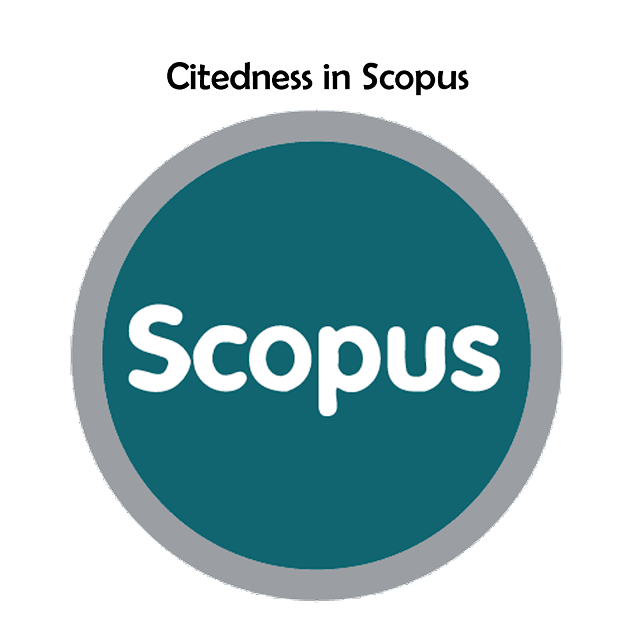Feature Space Augmentation for Negation Handling on Sentiment Analysis
Lutfi Budi Ilmawan(1*); Muladi Muladi(2); Didik Dwi Prasetya(3);
(1) Universitas Negeri Malang, Universitas Muslim Indonesia
(2) Universitas Negeri Malang
(3) Universitas Negeri Malang
(*) Corresponding Author
AbstractOne crucial issue affecting the performance of sentiment analysis tasks is negation. Handling negation involves determining the negation scope and negation cue. Feature space augmentation is one approach used to address negation. Feature space augmentation has been carried out by some previous researchers using a negation flag with the rule that the negation scope includes all words from the explicit negation cue to the punctuation mark. This study aimed to analyze the classifier's performance when negation handling was applied by adding a new rule for the negation scope. The new rule for determining the negation scope no longer took all words from the negation cue to the punctuation mark, but only considered or ignored words with certain POS tags. The results of this study showed that using the new rule for negation scope contributed to improving the performance of the classifier in sentiment analysis tasks. The proposed approach for negation handling was better than the previous approach in terms of accuracy, precision, recall, and f1-score. KeywordsNegation Handling; POS Tag; Sentiment Analysis
|
Full Text:PDF |
Article MetricsAbstract view: 572 timesPDF view: 326 times |
Digital Object Identifier https://doi.org/10.33096/ilkom.v15i2.1695.353-357 https://doi.org/10.33096/ilkom.v15i2.1695.353-357
|
Cite |
References
I. Chaturvedi, E. Cambria, R. E. Welsch, and F. Herrera, “Distinguishing between facts and opinions for sentiment analysis: Survey and challenges,” Inf. Fusion, vol. 44, pp. 65–77, Nov. 2018, doi: 10.1016/J.INFFUS.2017.12.006.
B. Liu, “Sentiment analysis: Mining opinions, sentiments, and emotions,” Sentim. Anal. Min. Opin. Sentim. Emot., pp. 1–367, Jan. 2015, doi: 10.1017/CBO9781139084789.
B. Schuller, A. E. D. Mousa, and V. Vryniotis, “Sentiment analysis and opinion mining: on optimal parameters and performances,” Wiley Interdiscip. Rev. Data Min. Knowl. Discov., vol. 5, no. 5, pp. 255–263, Sep. 2015, doi: 10.1002/WIDM.1159.
S. Ju and S. Li, “Active learning on sentiment classification by selecting both words and documents,” Lect. Notes Comput. Sci. (including Subser. Lect. Notes Artif. Intell. Lect. Notes Bioinformatics), vol. 7717 LNAI, pp. 49–57, 2013, doi: 10.1007/978-3-642-36337-5_6/COVER.
Y. Choi and H. Lee, “Data properties and the performance of sentiment classification for electronic commerce applications,” Inf. Syst. Front., vol. 19, no. 5, pp. 993–1012, Oct. 2017, doi: 10.1007/S10796-017-9741-7/FIGURES/7.
M. Birjali, M. Kasri, and A. Beni-Hssane, “A comprehensive survey on sentiment analysis: Approaches, challenges and trends,” Knowledge-Based Syst., vol. 226, p. 107134, 2021, doi: 10.1016/j.knosys.2021.107134.
P. K. Singh and S. Paul, “Deep Learning Approach for Negation Handling in Sentiment Analysis,” IEEE Access, vol. 9, pp. 102579–102592, 2021, doi: 10.1109/ACCESS.2021.3095412.
J. Barnes, E. Velldal, and L. Ovrelid, “Improving sentiment analysis with multi-task learning of negation,” Nat. Lang. Eng., vol. 27, no. 2, pp. 249–269, 2021, doi: 10.1017/S1351324920000510.
S. R. Das and M. Y. Chen, “Yahoo! for amazon: Sentiment extraction from small talk on the Web,” Manage. Sci., vol. 53, no. 9, pp. 1375–1388, 2007, doi: 10.1287/mnsc.1070.0704.
B. Pang, L. Lee, and S. Vaithyanathan, “Thumbs up? Sentiment Classification using Machine Learning Techniques,” no. July, pp. 79–86, 2002, [Online]. Available: http://arxiv.org/abs/cs/0205070
H. Y. Lee and H. Renganathan, “Chinese Sentiment Analysis Using Maximum Entropy,” in Proceedings of the Workshop on Sentiment Analysis where AI meets Psychology, 2011, pp. 89–93. [Online]. Available: http://acl.eldoc.ub.rug.nl/mirror/W/W11/W11-37.pdf#page=105
S. Das and M. Chen, “Yahoo! for Amazon: Extracting market sentiment from stock message boards,” in Proceedings of the Asia Pacific finance association annual conference (APFA), 2001, vol. 35, p. 43.
P. D. Turney, “Thumbs up or thumbs down? Semantic Orientation applied to Unsupervised Classification of Reviews,” in Proceedings of the 40th Annual Meeting of the Association for Computational Linguistics (ACL), 2002, no. July, pp. 417–424. doi: 10.3115/1073083.1073153.
M. Taboada, J. Brooke, M. Tofiloski, K. Voll, and M. Stede, “Lexicon-Based Methods for Sentiment Analysis,” Comput. Linguist., vol. 37, no. 2, pp. 267–307, 2011, doi: 10.1162/COLI_a_00049.
A. Mudinas, D. Zhang, and M. Levene, “Combining lexicon and learning based approaches for concept-level sentiment analysis,” in Proceedings of the ACM SIGKDD International Conference on Knowledge Discovery and Data Mining, 2012. doi: 10.1145/2346676.2346681.
M. D. Devika, C. Sunitha, and A. Ganesh, “Sentiment Analysis: A Comparative Study on Different Approaches,” Procedia Comput. Sci., vol. 87, no. December, pp. 44–49, 2016, doi: 10.1016/j.procs.2016.05.124.
A. Nasser, K. Dinçer, and H. Sever, “Investigation of the Feature Selection Problem for Sentiment Analysis in Arabic Language,” Res. Comput. Sci., vol. 110, no. 1, pp. 41–54, 2016, doi: 10.13053/rcs-110-1-4.
P. H. Shahana and B. Omman, “Evaluation of features on sentimental analysis,” Procedia Comput. Sci., vol. 46, no. Icict 2014, pp. 1585–1592, 2015, doi: 10.1016/j.procs.2015.02.088.
C. Diamantini, A. Mircoli, D. Potena, and E. Storti, “Social information discovery enhanced by sentiment analysis techniques,” Futur. Gener. Comput. Syst., vol. 95, pp. 816–828, 2019, doi: 10.1016/j.future.2018.01.051.
C. D. Manning, P. Raghavan, and H. Schütze, Introduction to Modern Information Retrieval (2nd edition), Online Edi. Cambridge: Cambridge University Press, 2009. doi: 10.1108/00242530410565256.
A. Go, R. Bhayani, and L. Huang, “Twitter Sentiment Classification using Distant Supervision,” California, 2009. doi: 10.1016/j.sedgeo.2006.07.004.
L. P. Hung, R. Alfred, and M. H. A. Hijazi, “A review on feature selection methods for sentiment analysis,” Adv. Sci. Lett., vol. 21, no. 10, pp. 2952–2956, 2015, doi: 10.1166/asl.2015.6475.
D. S. Guru, M. Ali, and M. Suhil, “A novel feature selection technique for text classification,” Adv. Intell. Syst. Comput., vol. 813, pp. 721–733, 2019, doi: 10.1007/978-981-13-1498-8_63.
H. M. K. Kumar and B. S. Harish, “A New Feature Selection Method for Sentiment Analysis in Short Text,” J. Intell. Syst., vol. 29, no. 1, pp. 1122–1134, 2020, doi: 10.1515/jisys-2018-0171.
M. Iqbal, M. M. Abid, M. N. Khalid, and A. Manzoor, “Review of feature selection methods for text classification,” Int. J. Adv. Comput. Res., vol. 10, no. 49, pp. 138–152, 2020, doi: 10.19101/ijacr.2020.1048037.
Refbacks
- There are currently no refbacks.
Copyright (c) 2023 Lutfi Budi Ilmawan, Muladi Muladi, Didik Dwi Prasetya

This work is licensed under a Creative Commons Attribution-ShareAlike 4.0 International License.







